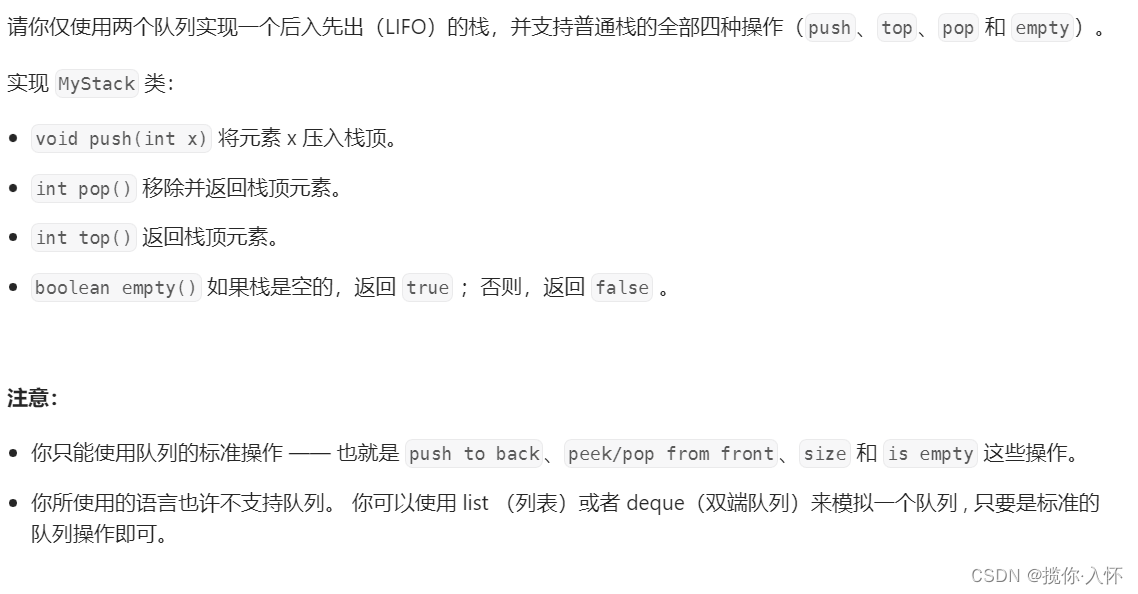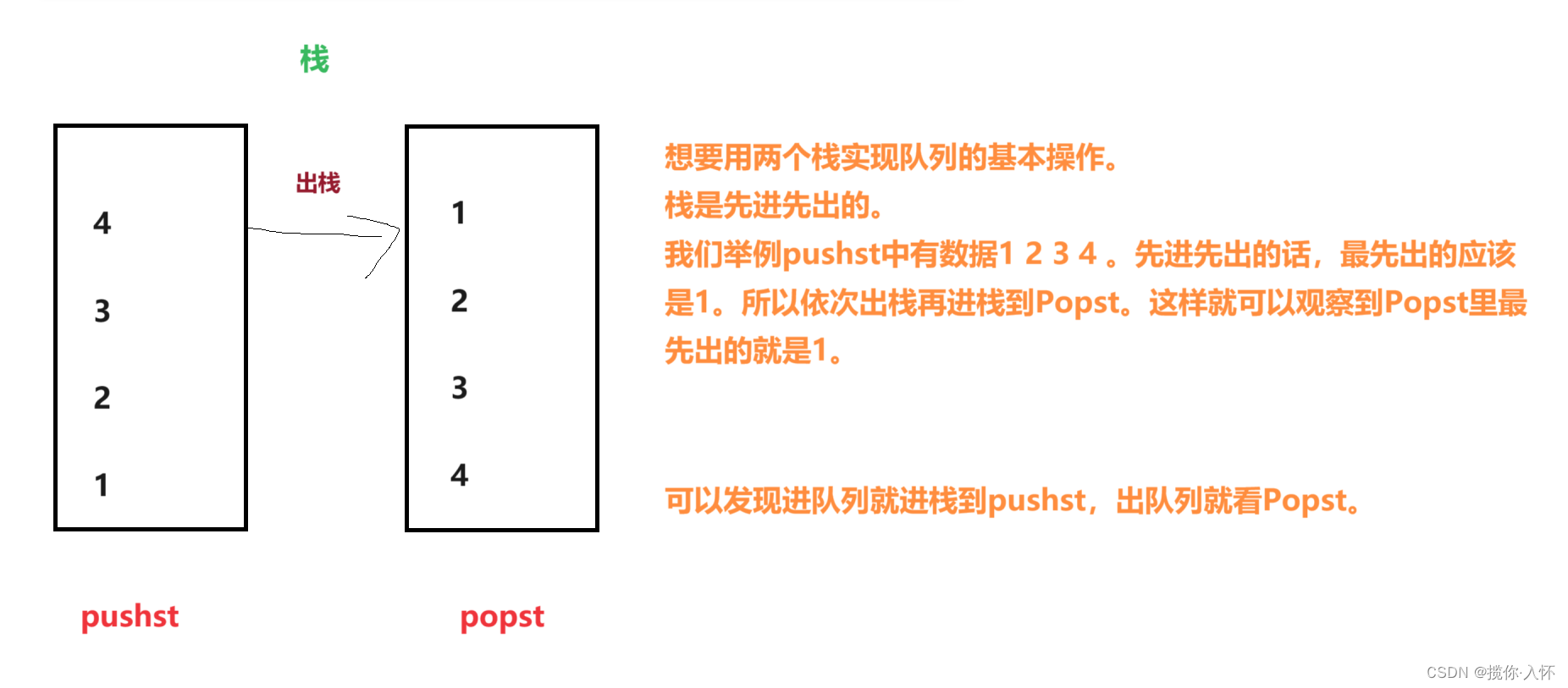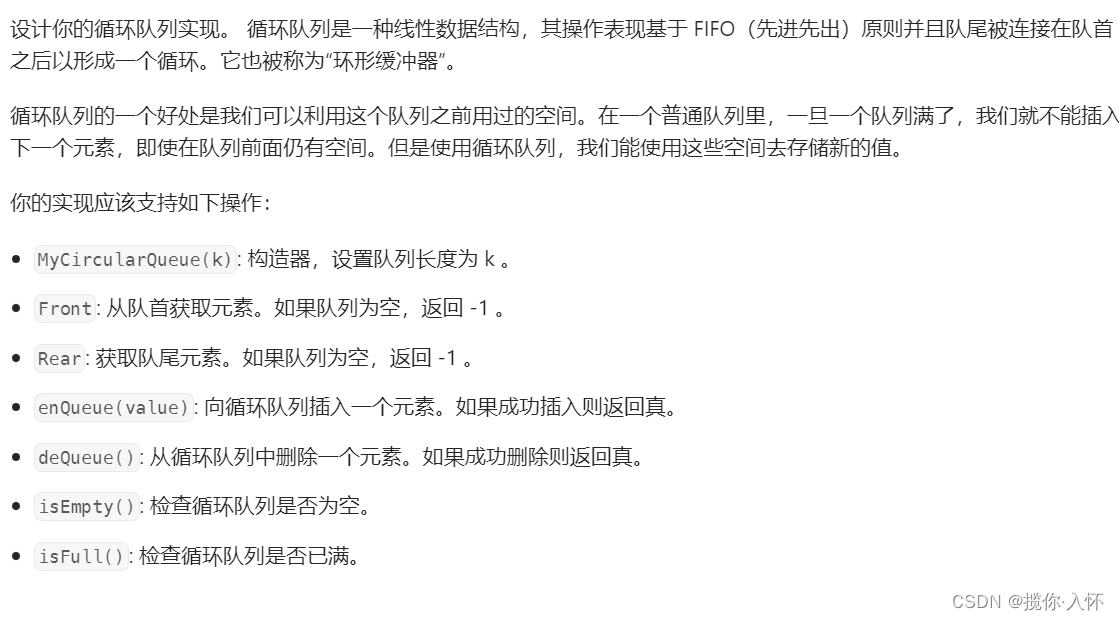周浦高端网站建设公司西安seo关键词查询
目录
队列的概念和结构
队列的实现
结构定义
初始化
判空
入队列
出队列
返回队头元素
返回队尾元素
返回size
销毁
队列的概念和结构
队列:只允许在一端进行插入数据操作,在另一端进行删除数据操作的特殊线性表,队列具有先进先出 FIFO(First In First Out) 入队列:进行插入操作的一端称为队尾 出队列:进行删除操作的一端称为队头

队列的实现
队列也可以数组和链表的结构实现,使用链表的结构实现更优一些,因为如果使用数组的结构,出队列在数组头上出数据,牵扯挪动数据覆盖,效率会比较低。
结构定义
typedef int QueueDataType;
typedef struct QueueNode
{struct QueueNode* next;QueueDataType data;
}QNode;typedef struct Queue
{QNode* phead;QNode* ptail;int size;
}Queue;初始化
void QueueInit(Queue* pq)
{assert(pq);pq->phead = NULL;pq->ptail = NULL;pq->size = 0;
}判空
删除元素和返回队列元素需要判空。
bool QueueEmpty(Queue* pq)
{assert(pq);return pq->phead == NULL && pq->ptail == NULL;
}入队列
void QueuePush(Queue* pq, QueueDataType x)
{assert(pq);QNode* newnode = (QNode*)malloc(sizeof(QNode));if (newnode == NULL){perror("maoolc fail");return;}newnode->data = x;newnode->next = NULL;//无节点if (pq->phead == NULL){assert(pq->ptail == NULL);pq->phead = pq->ptail = newnode;}//多个节点else{pq->ptail->next = newnode;pq->ptail = newnode;}pq->size++;
}出队列
void QueuePop(Queue* pq)
{assert(pq);assert(!QueueEmpty(pq));//一个节点if (pq->phead->next == NULL){free(pq->phead);pq->phead = pq->ptail = NULL;}else{QNode* next = pq->phead->next;free(pq->phead);pq->phead = next;}pq->size--;
}返回队头元素
QueueDataType QueueFront(Queue* pq)
{assert(pq);assert(!QueueEmpty(pq));return pq->phead->data;
}返回队尾元素
QueueDataType QueueBack(Queue* pq)
{assert(pq);assert(!QueueEmpty(pq));return pq->ptail->data;
}返回size
int Queuesize(Queue* pq)
{assert(pq);return pq->size;
}销毁
void QueueDestroy(Queue* pq)
{assert(pq);QNode* cur = pq->phead;while (cur){QNode* next = cur->next;free(cur);cur = next;}pq->phead = pq->ptail = NULL;pq->size = 0;
}队列oj
1.用队列实现栈
oj链接

这道题目利用两个队列实现栈,栈的特点是先进后出。所以出栈就用两个队列来回倒数据。倒到最后一个数据就是要出栈的数据。至于入栈就交给有数据的队列即可。
typedef struct {Queue q1;Queue q2;
} MyStack;MyStack* myStackCreate() {MyStack* obj = (MyStack*)malloc(sizeof(MyStack));if(NULL == obj){perror("malloc fail");return NULL;}QueueInit(&obj->q1);QueueInit(&obj->q2);return obj;
}void myStackPush(MyStack* obj, int x) {if(!QueueEmpty(&obj->q1)){QueuePush(&obj->q1,x);}else{QueuePush(&obj->q2,x);}
}int myStackPop(MyStack* obj) {Queue* qEmptyp = &obj->q1;Queue* qNonEmptyp = &obj->q2;if(!QueueEmpty(&obj->q1)){qEmptyp = &obj->q2;qNonEmptyp = &obj->q1;}//倒数据while(Queuesize(qNonEmptyp)>1){QueuePush(qEmptyp,QueueFront(qNonEmptyp));QueuePop(qNonEmptyp);}int top = QueueFront(qNonEmptyp);QueuePop(qNonEmptyp);return top;
}int myStackTop(MyStack* obj) {if(!QueueEmpty(&obj->q1)){return QueueBack(&obj->q1);}else{return QueueBack(&obj->q2);}
}bool myStackEmpty(MyStack* obj) {return QueueEmpty(&obj->q1) && QueueEmpty(&obj->q2);
}void myStackFree(MyStack* obj) {QueueDestroy(&obj->q1);QueueDestroy(&obj->q2);free(obj);
}2.用栈实现队列
oj链接

图解:
typedef struct {ST pushst;ST popst;
} MyQueue;MyQueue* myQueueCreate() {MyQueue* obj = (MyQueue*)malloc(sizeof(MyQueue));if(NULL == obj){perror("malloc fail");}STInit(&obj->pushst);STInit(&obj->popst);return obj;
}void myQueuePush(MyQueue* obj, int x) {STPush(&obj->pushst,x);
}int myQueuePeek(MyQueue* obj) {if(STEmpty(&obj->popst)){while(!STEmpty(&obj->pushst)){STPush(&obj->popst,STTop(&obj->pushst));STPop(&obj->pushst); }}return STTop(&obj->popst);
}int myQueuePop(MyQueue* obj) {int top = myQueuePeek(obj);STPop(&obj->popst);return top;
}bool myQueueEmpty(MyQueue* obj) {return STEmpty(&obj->pushst) &&STEmpty(&obj->popst);
}void myQueueFree(MyQueue* obj) {STDestroy(&obj->popst);STDestroy(&obj->pushst);free(obj);
}3.设计循环队列
oj链接

可以用数组实现循环队列,也可以使用链表。我是用的是数组。因为题目需要返回队尾数据,数组方便一些。
typedef struct {int k;int front;//头int rear;//尾int* a;
} MyCircularQueue;MyCircularQueue* myCircularQueueCreate(int k) {MyCircularQueue* obj = (MyCircularQueue*)malloc(sizeof(MyCircularQueue));obj->a = (int*)malloc(sizeof(int)*(k+1));obj->front = obj->rear = 0;obj->k = k;return obj;
}bool myCircularQueueIsEmpty(MyCircularQueue* obj) {return obj->front == obj->rear;
}bool myCircularQueueIsFull(MyCircularQueue* obj) {return (obj->rear+1)%(obj->k+1) == obj->front;
}
bool myCircularQueueEnQueue(MyCircularQueue* obj, int value) {if(myCircularQueueIsFull(obj)){return false;}else{obj->a[obj->rear] = value;obj->rear++;obj->rear %= (obj->k+1);return true;}}bool myCircularQueueDeQueue(MyCircularQueue* obj) {if(myCircularQueueIsEmpty(obj)){return false;}else{obj->front++;obj->front %= (obj->k+1);return true;}
}int myCircularQueueFront(MyCircularQueue* obj) {if(myCircularQueueIsEmpty(obj)){return -1;}else{return obj->a[obj->front];}
}int myCircularQueueRear(MyCircularQueue* obj) {if(myCircularQueueIsEmpty(obj)){return -1;}else{return obj->a[(obj->rear+obj->k)%(obj->k+1)];}
}void myCircularQueueFree(MyCircularQueue* obj) {free(obj->a);free(obj);
}总结
队列作为一种常见的数据结构,在计算机科学中有广泛的应用,通常运用于广度优先搜索、任务调度等场景。希望这篇文章可以帮助到你更好的学习和理解队列的知识。
